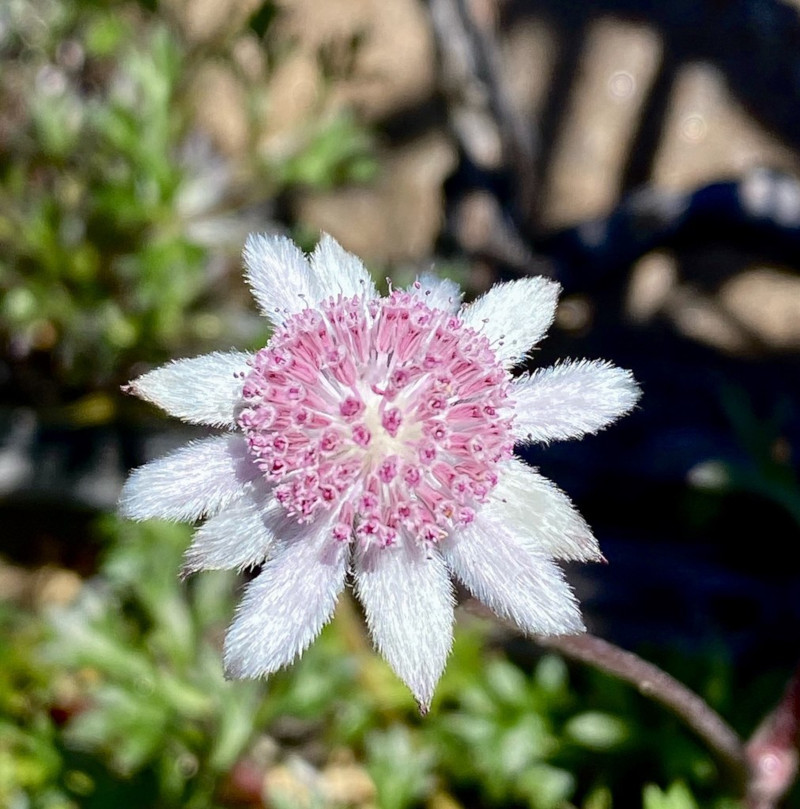
Pink Flannel Flower Facts
- The descriptive term of Pink Flannel Flower serves as the most frequently used of the common names for this plant. It’s also known by other common names, though. These include the ridge flannel flower. By either term, however, it’s a beautiful flower.
- It’s official scientific name’s a bit of a tongue-twister, however, as is often the case. That’s because professionals know it by the hard to pronounce term of Actinotus forsythii. Part of the term comes from ancient Greek, and refers to its appearance.
- It owes that name to the two researchers who made the first recognition of it as a distinct species. The British botanist Joseph Henry Maiden and the German-Australian botanist Daniel Ludwig Ernst Betche jointly hold this place in the annals of science.
- A surprising situation also exists, surrounding its conservation status, in the minds of some. That’s due to the fact that, for the moment, it does not appear on the IUCN Red List. Admittedly, it appears to be relatively abundant in its region, but that’s a tiny one.
- While not presently on that organization’s list, the Pink Flannel Flower nevertheless faces threats to its existence. Since its habitat options are limited, habitat loss poses a threat. The greatest, though, like many species, likely comes from climate change.
Related Articles
Pink Flannel Flower Physical Description
The visually appealing Pink Flannel Flower has a surprising structure. That’s because the plant has a random, wire-like nature. In construction, its base resembles a collection of weeds, in fact. Do not let this natural design fool you, however. It’s a marvel of Nature.
This herbaceous perennial produces copious numbers of thin stems. Many of these attain a length of as much as 19.7 in (50 cm). They do not grow vertically, though. In point of fact, these typically trail along the ground, only angling upward slightly at the end.
The leaves of the plant usually appear at or near the base of each stem. These may be as long as 0.7 in (18 mm), but typically remain even shorter. This small foliage further displays a unique nature itself. Each has a soft, velvety feel, and shows a light grayish green color.
The bloom of the Pink Flannel Flower itself, however, draws the most attention. This has a decidedly daisy-like shape. Each individual further develops a number of short, thin bracts. The number varies, but averages around 12. These usually display a light pink shade.
The central structure, meanwhile, consists of numerous tiny stalks. Each flower also develops both male and female flowers within this structure. The color of this portion of the bloom typically manifests a darker shade of pink, creating a striking visual contrast.
- Kingdom: Plantae
- Phylum: Angiosperms
- Class: Eudicots
- Order: Apiales
- Family: Apiaceae
- Genus: Actinotus
- Species: A. forsythii
Pink Flannel Flower Distribution, Habitat, and Ecology
Unfortunately for those who appreciate its beauty, the Pink Flannel Flower has an extremely restricted range of habitation. That’s due to the fact that it appears naturally in only one small, isolated corner of the globe. That spot’s located on the continent of Australia.
More precisely, the flower appears in only a tiny section of the southeastern section of the region. There, it makes its home in only Victoria and New South Wales. Within that zone, it roughly lives from northeast Victoria to the Blue Mountains west of the city of Sydney.
Yet, even in this range it lives in just a few very specific types of habitat. These mainly consist of areas of sandstone, in heaths with shallow soil, or in damp regions of eucalyptus forests. Regardless of where it lives, though, the species evolved a most unusual pattern.
This beautiful small Angiosperm does not appear every year. In fact, it often lies dormant for years before making an appearance. When it does so, however, it’s typically due to an unusual, and rare combination of factors. It usually only appears after a fire!
The seeds of the remarkably evolved Pink Flannel Flower lie dormant in the soil, frequently for long periods. That’s because they require such a precise combination of climactic conditions to achieve germination. This usually only occurs after a fire, followed by rain.
When the gorgeous Eudicots does develop, the blooming typically occurs in summer. It will, however, sometimes happen in the spring. After the blooming, the seeds develop within the head, having a fluffy nature. These then spread via the actions of local winds.
Species Sharing Its Range
Check out our other articles on 3 Magnificent North American Eagles, Bonnethead Shark, Saint Mary’s Islands, Hyacinth Macaw, Swamp Wallaby, Mormon Metalmark, Jewelled Gecko
